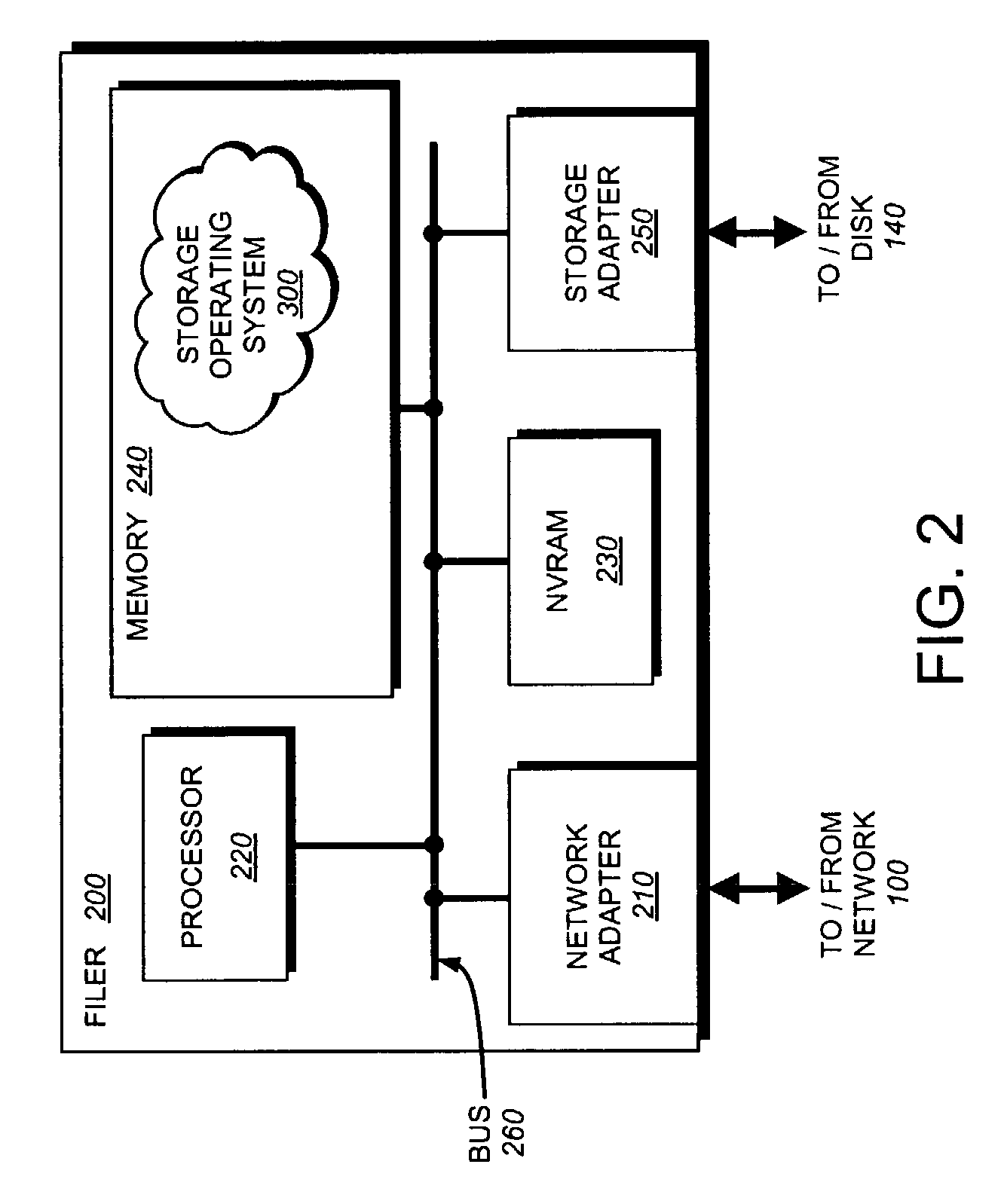Efficient, robust file handle invalidation
a file handle and robust technology, applied in the field of storage systems, can solve the problems of data recovery problems, failure of filer's backup nvram, power loss, etc., and achieve the effect of reducing coding overhead, reducing processing costs, and fast performan
- Summary
- Abstract
- Description
- Claims
- Application Information
AI Technical Summary
Benefits of technology
Problems solved by technology
Method used
Image
Examples
Embodiment Construction
A. Storage System Environment
[0033]FIG. 1 is a schematic block diagram of a storage system environment that includes a network 100 through which a client 110 may communicate with a server, e.g., a file server 200. The network may comprise one or more point-to-point links, shared local area networks (LAN), wide area networks (WAN), and the like. The filer server or “filer”200 is a computer that provides file service relating to the organization of information on storage devices, such as storage disks 140. In operation, the client may send the filer a request 120 to access a specific file or directory, e.g., stored in the disks 140. The request may be “packetized” and formatted according to predetermined communication protocols, such as the Transport Control Protocol (TCP) and Internet Protocol (IP). The filer processes the client request and, when appropriate, transmits a response 130 to the client over the network 100.
[0034]FIG. 2 is a schematic block diagram of the filer 200 that m...
PUM
 Login to View More
Login to View More Abstract
Description
Claims
Application Information
 Login to View More
Login to View More - R&D
- Intellectual Property
- Life Sciences
- Materials
- Tech Scout
- Unparalleled Data Quality
- Higher Quality Content
- 60% Fewer Hallucinations
Browse by: Latest US Patents, China's latest patents, Technical Efficacy Thesaurus, Application Domain, Technology Topic, Popular Technical Reports.
© 2025 PatSnap. All rights reserved.Legal|Privacy policy|Modern Slavery Act Transparency Statement|Sitemap|About US| Contact US: help@patsnap.com



